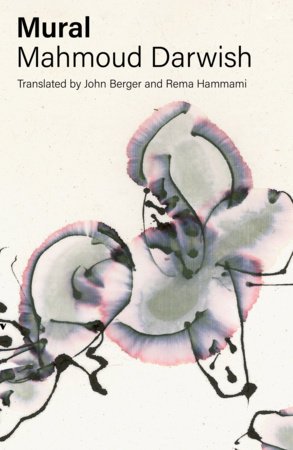Mural by Mahmoud Darwish and translated by John Berger and Rema Hammami
Mahmoud Darwish was a renowned Palestinian poet who died in 2008. Born in 1941, he lived through many of the conflicts between Palestine and Israel and later exiled to other nations. Mural, published from Verso Books and translated by John Berger and Rema Hammami, was originally released in 2009 in order to capture some of the poet’s last works. It contains two poems: “Mural,” a long-form poem that meanders between life and death, home and exile, femininity and masculinity; and, “The Dice Player,” his last poem which teeters between life and legacy.
Because Darwish was a prolific writer and deeply respected for his talents, I certainly feel the pressure of Who am I to review this work? Given this reviewer’s lack of experience of exile, of a homeland torn away, of imprisonment based on speaking out against injustice, of a delegitimizing of one’s childhood home and nationality, there is a depth to these poems that I may never be able to fully comprehend. That doesn’t mean I shouldn’t try, though.
Part of the beauty of poetry is the opportunity to view the world through another’s eyes, to not only see the world as they do but to feel it as well. In Mural, Darwish’s writing feels like a gossamer cobweb: strong but fragile, broken but rebuilt, shimmering but disappearing. Mural is on the one hand hopeful as when he writes:
One day I’ll become what I want
One day I will become a thought
that no sword or book can dispatch to the wasteland
A thought equal to rain on the mountain split open by a blade of grass
where power will not triumph
and justice is not fugitive
There is hope for the future in these words. There is hope for the land he’s from and its future–what will be. However, “Mural” is equally filled with grief:
You killed me my friend when you left me at the door of the labyrinth
Now it’s up to me alone to watch over our fate
and like a love furious bull carry the world on my shoulders
I have to find alone an exit from the footsteps of my destiny
At times, this hope and grief live in the same space:
Come let’s go towards the highest mural:
The land of my poem is green and high
God’s words at dawn are the land of my poem
and I’m the faraway
far away
This is an excellent example of these two feelings living simultaneously. On the one hand, he characterizes his work, over and over again, as green and growing–verdant, but on the other hand, is also grieved to be distanced from it. In a way, this is an expansion on his lines about life and death. While he is often grateful for survival, he is also accepting that death is inevitable. We all inevitably will die and no amount of pride, talent, or negotiation will prevent that.
In “The Dice Player,” Darwish reiterates “who am I to say” multiple times throughout the poem. For instance:
who am I to say to you
what I’m saying
at the door of the church
I’m nothing but the fall of the dice
landing between predator and prey
These are humble moments. It reinforces the uncertainty of what may happen. We may be grateful for survival, as when the poem notes:
So let’s celebrate in the moon’s sonata
and make a toast to the lenience of death
who saw the three of us happy together
and decided to look the other way!
However, this does not excuse injustice. While we can be grateful of our survival, of the life that we do have, we do not have to accept the world’s injustices as forgone conclusions for others. A later refrain proclaims:
Who am I to say to you
what I’m saying?
It would have been possible not to be who I am
It would have been possible not to be here …
Perhaps it would have been possible to live a life with less suffering. Perhaps it would have been possible to have more certainty, more stability. In the last stanza of “The Dice Player,” Darwish asks:
Who am I to defy nothing?
who am I? who am I?
Who am I to write this review? Who would I be if I didn’t open myself to another’s world and feel their suffering alongside them? Who are we to defy humanity?
Mural by Mahmoud Darwish, translated by John Berger and Rema Hammami
